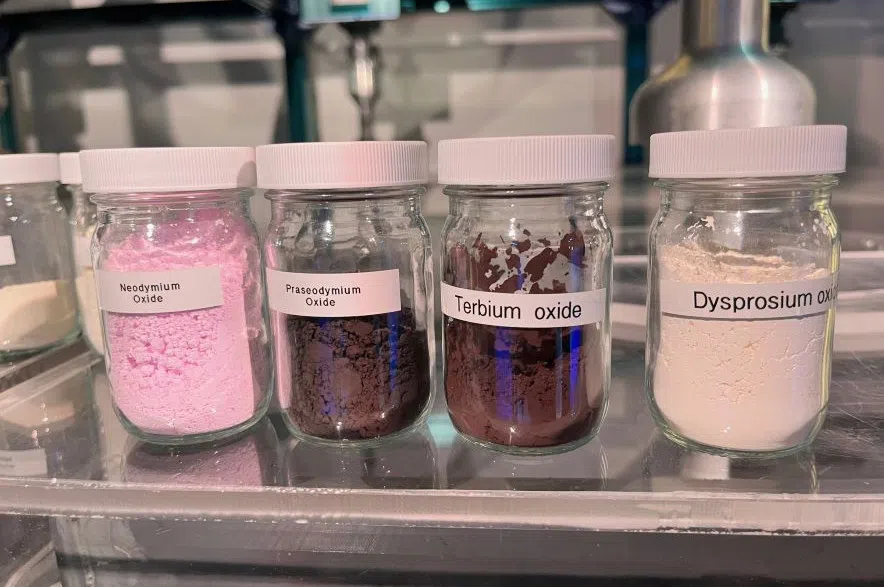The Saskatchewan Research Council is expecting to produce 400 tonnes of rare earth metals each year, starting in 2025.
The announcement comes after the council signed a five-year agreement in principle with the Vietnam-based Hung Thinh Group to import 3,000 tonnes of rare earth carbonate each year.
“Securing this supply of rare earth carbonate will allow SRC’s Facility to process, separate and produce approximately 400 tonnes of rare earth metals per year,” the research council explained in a statement. “These rare earth metals are essential for modern technology including cellphones, electric vehicles, robotics and green technologies.”
“The production of rare earth metals will develop and stimulate the rare earth industry in North America,” research council CEO Mike Crabtree added.
READ MORE:
- Saskatchewan sending trade delegation to Vietnam
- Saskatoon’s Vital Metals liquidates assets amid bankruptcy
- Sask. Research Council to oversee microreactor development
The provincial government has invested $71 million on the council’s Saskatoon processing facility since 2020. According to the council, work at the facility has led to the development of proprietary technology and methods for rare earth processing, extracting solvents, and smelting metals.
The government has been working to make the facility a major hub for rare earths in North America, and Jeremy Harrison, the minister responsible for the research council, said Monday’s announcement takes them further down that path.
“Working with the international community to secure this supply of critical minerals for SRC’s Rare Earth Processing Facility marks another step forward in establishing a domestic rare earth element hub in Saskatchewan,” Harrison said in a statement.
“This agreement means SRC’s facility will have the resources essential for the production of rare earth metals in Saskatchewan for the next five years.”
Minister Jeremy Harrison says the new agreement with the Vietnam-based Hung Thinh Group will be a boon for Saskatchewan. (Lisa Schick/980 CJME)
New mineral partnership signed with France
On Monday, Harrison also announced a letter of intent signed between Saskatchewan and France to develop supply chains for strategic minerals.
Saskatchewan is home to 23 critical minerals, the provincial government noted, including uranium, potash, rare earths, helium, copper and lithium.
The letter includes the intention to share knowledge and jointly develop projects related to innovations in critical minerals, particularly when it comes to improving supply chains, sustainability and research and development. Demand for those minerals is expected to jump by as much as 600 per cent over the coming decades, the government added, and Saskatchewan is well-positioned as a supplier.
“Throughout our province’s history, our mining and resource sector has remained vital to our economy and labour force,” Harrison said in a statement. “New partnerships like this one strengthen that history and move us forward in our goals to build opportunities and protect communities.”
According to Franck Riester, French minister delegate for foreign trade, this is only the second time France has entered into an agreement with a Canadian province.
“That says a lot about the priority we attach to our relationship with Saskatchewan,” Riester said in a statement.
“Strategic minerals are key for the ongoing transition to a low-carbon economy, whether it be building electric vehicles or producing the energy that our societies require, and therefore reinforcing France’ sovereignty. This partnership represents a major milestone in stepping up the bilateral efforts in this direction.”












